Platinum(II)-ammonium chloride
Synonym(s):Platinum(II)-ammonium chloride
- CAS NO.:13820-41-2
- Empirical Formula: Cl4H4NPt-
- Molecular Weight: 354.92
- MDL number: MFCD00010885
- EINECS: 237-499-1
- SAFETY DATA SHEET (SDS)
- Update Date: 2024-04-16 18:29:06
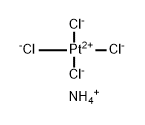
What is Platinum(II)-ammonium chloride?
Description
Ammonium tetrachloroplatinate is a darkrubyred crystalline solid. Molecular weight= 372.96; Specific gravity=2.93; Freezing/Melting point= 140- 150℃.Soluble in water.
Chemical properties
light brown orange to red crystalline powder
Chemical properties
Ammonium tetrachloroplatinate is a dark ruby-red crystalline solid.
The Uses of Platinum(II)-ammonium chloride
In photography.
The Uses of Platinum(II)-ammonium chloride
in photography. ICU
The Uses of Platinum(II)-ammonium chloride
Ammonium tetrachloroplatinate(II) is used in spectral analysis standard. It is also used in the preparation of platinum sponge and platinum catalytic agent.
Definition
ChEBI: Ammonium tetrachloroplatinate is a salt comprising separate ammonium cations and square planar [PtCl4](2-) anions. It contains a tetrachloroplatinate(2-).
Safety Profile
Poison by intraperitoneal route. When heated to decomposition it emits toxic fumes of NH3, Cl-, and Pt.
Potential Exposure
This material is used in photography.
First aid
If this chemical gets into the eyes, remove any contact lenses at once and irrigate immediately for at least 15 min, occasionally lifting upper and lower lids. Seek medical attention immediately. If this chemical contacts the skin, remove contaminated clothing and wash immediately with soap and water. Seek medical attention immediately. If this chemical has been inhaled, remove from exposure,begin rescue breathing (using universal precautions, including resuscitation mask) if breathing has stopped and CPR if heart action has stopped. Transfer promptly to a medical facility. When this chemical has been swallowed, get medical attention. Give large quantities of water and induce vomiting. Do not make an unconscious person vomit.
storage
Color Code—Green: General storage may be used.It is a skin and inhalation sensitizer; the Color Code—Bluemay be used. Prior to working with this chemical you shouldbe trained on its proper handling and storage. Store in tightlyclosed containers in a cool, well-ventilated area away fromoxidizers, strong acids, strong bases.
Shipping
UN3077 Environmentally hazardous substances, solid, n.o.s., Hazard class: 9; Labels: 9-Miscellaneous hazardous material, Technical Name Required.
Incompatibilities
Incompatible with oxidizers (chlorates, nitrates, peroxides, permanganates, perchlorates, chlorine, bromine, fluorine, etc.); contact may cause fires or explosions. Keep away from alkaline materials, strong bases, strong acids, oxoacids, epoxides.
Properties of Platinum(II)-ammonium chloride
| Melting point: | 140 °C (dec.)(lit.) |
| Density | 2.936 g/mL at 25 °C(lit.) |
| storage temp. | under inert gas (nitrogen or Argon) at 2-8°C |
| solubility | soluble in H2O; insoluble in ethanol |
| form | Crystals |
| color | Pink |
| Specific Gravity | 2.936 |
| Water Solubility | Soluble |
| Sensitive | Hygroscopic |
| Merck | 13,553 |
| Exposure limits | ACGIH: TWA 0.002 mg/m3 NIOSH: IDLH 4 mg/m3; TWA 0.002 mg/m3 |
| CAS DataBase Reference | 13820-41-2(CAS DataBase Reference) |
| EPA Substance Registry System | Platinate(2-), tetrachloro-, ammonium (1:2), (SP-4-1)- (13820-41-2) |
Safety information for Platinum(II)-ammonium chloride
| Signal word | Danger |
| Pictogram(s) |
 Corrosion Corrosives GHS05  Skull and Crossbones Acute Toxicity GHS06  Health Hazard GHS08 |
| GHS Hazard Statements |
H301:Acute toxicity,oral H315:Skin corrosion/irritation H317:Sensitisation, Skin H318:Serious eye damage/eye irritation H334:Sensitisation, respiratory |
| Precautionary Statement Codes |
P280:Wear protective gloves/protective clothing/eye protection/face protection. P302+P352:IF ON SKIN: wash with plenty of soap and water. |
Computed Descriptors for Platinum(II)-ammonium chloride
| InChIKey | QJIMNDWDOXTTBR-UHFFFAOYSA-L |
Abamectin manufacturer
Dhara Industries
Metal Chem India
New Products
4-Aminotetrahydropyran-4-carbonitrile Hydrochloride (R)-3-Aminobutanenitrile Hydrochloride 4-AMINO-TETRAHYDRO-PYRAN-4-CARBOXYLIC ACID HCL 4-(Dimethylamino)tetrahydro-2H-pyran-4-carbonitrile 3-((Dimethylamino)methyl)-5-methylhexan-2-one oxalate 1,4-Dioxa-8-azaspiro[4.5]decane 5-Bromo-2-nitropyridine Nimesulide BP Aceclofenac IP/BP/EP Diclofenac Sodium IP/BP/EP/USP Mefenamic Acid IP/BP/EP/USP Ornidazole IP Diclofenac Potassium SODIUM AAS SOLUTION ZINC AAS SOLUTION BUFFER SOLUTION PH 10.0(BORATE) GOOCH CRUCIBLE SINTERED AQUANIL 5 BERYLLIUM AAS SOLUTION 2-Bromo-1-(bromomethyl)-3-chloro-5-nitrobenzene 2-Bromo-3-nitroaniline N-(3-Hydroxypropyl)-N-methylacetamide 3-Bromo-6-chloropyridazine 4-ethyl-3-nitrobenzoic acidRelated products of tetrahydrofuran
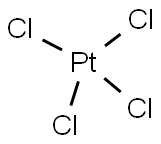



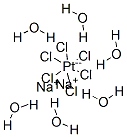
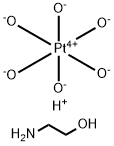
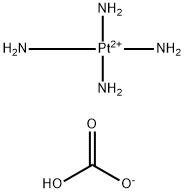

You may like
-
 13820-41-2 AMMONIUM TETRACHLOROPLATINATE 99.9%View Details
13820-41-2 AMMONIUM TETRACHLOROPLATINATE 99.9%View Details
13820-41-2 -
 13820-41-2 99%View Details
13820-41-2 99%View Details
13820-41-2 -
 Ammonium tetrachloroplatinate(II) 99%View Details
Ammonium tetrachloroplatinate(II) 99%View Details -
 Ammonium tetrachloroplatinate(II) 13820-41-2 98%View Details
Ammonium tetrachloroplatinate(II) 13820-41-2 98%View Details
13820-41-2 -
 Ammonium tetrachloroplatinate(II) CAS 13820-41-2View Details
Ammonium tetrachloroplatinate(II) CAS 13820-41-2View Details
13820-41-2 -
 Ammonium tetrachloroplatinate(II) CAS 13820-41-2View Details
Ammonium tetrachloroplatinate(II) CAS 13820-41-2View Details
13820-41-2 -
 Ammonium tetrachloroplatinate(II) CAS 13820-41-2View Details
Ammonium tetrachloroplatinate(II) CAS 13820-41-2View Details
13820-41-2 -
 Lithium ClavulanateView Details
Lithium ClavulanateView Details
61177-44-4